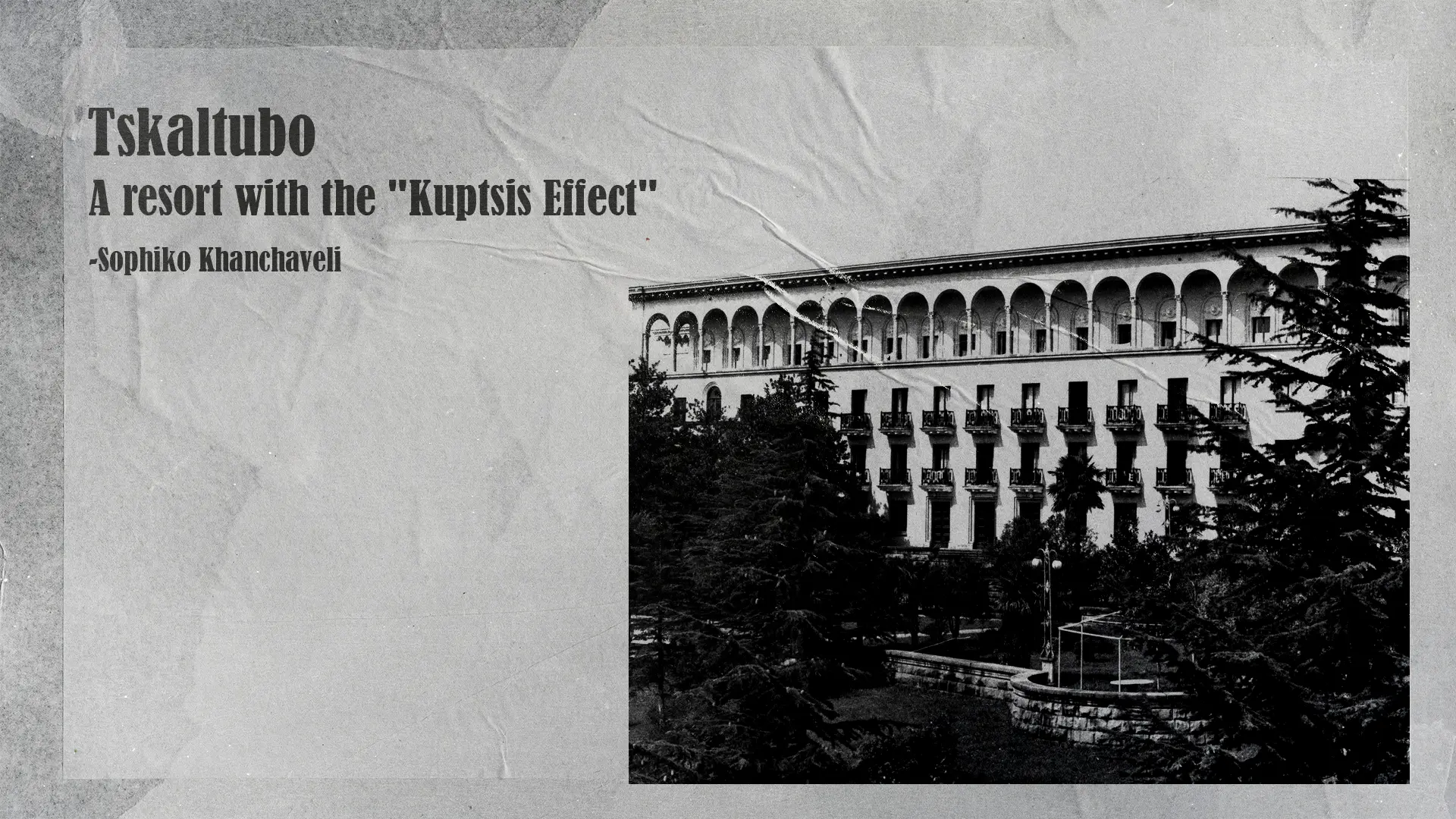
Author: Sophiko Kanchaveli
Legends or myths about their founding always accompany the creation of cities. Many stories circulate about Tskhaltubo, a city intertwined with truth and fiction. One such tale recounts how, upon discovering warm water rising from the ground, a shepherd found relief for his weary legs in its warmth, experiencing its miraculous power. He then shared this discovery with others. Another story attributes the discovery of the waters to the noble Ioselani family, while others speak of ancient hunters using the warm water to treat wounds of hunted animals.
In reality, the healing properties of Tskaltubo were known as far back as the 12th-13th centuries. This is confirmed by a document found by Tedo Zhordania, dated between 1246 and 1250, during the era of David Narin, which mentions the “House of Maglak Abanois.” According to this document, baths in Tskaltubo existed during this period, though the name Tskaltubo itself was not yet in use. Historical sources unequivocally report that Queen Ekaterina Chavchavadze-Dadiani of Samegrelo frequently visited this area. The place’s name, Tskaltubo, which means a place full of warm water, also has a Megrelian etymology.
Although Tskaltubo does not have a long historical past, its water, which the Georgian people have been proud of since ancient times, is truly unique and wondrous. This is why Tskaltubo has been a member city of the World Thermal Water Association since 2011. The healing properties of Tskaltubo’s water have been debated for 100 years, but the acknowledgment of these properties officially began during the era of Tsarist Russia.
In 1892, a correspondent for the “Novoe Obozrenie” newspaper wrote, “If the Tskaltubo baths remain in such an unkempt, unsightly state, they could greatly harm the spread of infectious diseases.” At that time, the need for a doctor and medical supervision in Tskaltubo became evident, as people were amazed by the water’s unique nature and questioned whether it was healing or merely warm water flowing from the earth’s core.
Officially, in 1898, the Kutaisi governor’s physician, Sergeenko, wrote a report to the Kutaisi governor about the situation in Tskaltubo, emphasizing the significant increase in the number of patients there. Sergeenko deemed establishing medical supervision and creating balneological (spa treatment) institutions essential. Kutaisi Governor Miklashevsky advocated for this proposal to the ruler of the Caucasus.
Before Tskaltubo was declared a resort, a commission was established to conduct a detailed chemical analysis of its waters. In 1898, chemist G.V. Struve analyzed five springs and categorized them as indifferent waters without healing properties, a conclusion that significantly hindered the development of Tskaltubo. This “conclusion” led to unrest, and the emperor began to search for another chemist who would examine the water’s composition professionally.
“By order of the Russian Emperor and the decree of the Crown Prince of the Caucasus, you are to immediately proceed to the specified address to investigate the mineral springs in the Kutaisi province!”( The address was Tskaltubo) – This letter was received on April 27, 1913, by the 24-year-old Latvian chemist Robert Kuptsis.
Thus, Robert Kuptsis arrived in Tskaltubo, a name now associated with the century-long history of the area’s development into a resort. He was the first to discover radon in Tskaltubo’s waters, referring to them as “radon waters.” Kuptsis cautioned, “Indulging in the mineral waters and therapeutic muds of Tskaltubo is risky, and those seeking treatment should be cautious.”
In 1925, he noted, “All of Georgia is a resort; its mud and water save everyone and everything. It is rare for a country to possess such pristine natural riches. It is imperative to find all possible means to ensure that mills do not encroach upon Georgia’s mineral waters.”
Kuptsis personally surveyed over 1000 springs in Georgia, analyzing the water composition of Mendzhi, Lebarde, Nunisi, Skuri, Shovi, Tkvarcheli, Zvare, Muashi, Sairme, and 18 other locations. His research interests extended beyond water; he also studied human blood in Georgia. His work, “Comparison of Blood Groups from a Forensic Perspective,” is included in a forensic chemistry textbook under “The Kuptsis Effect.” To date, 61 of his publications, 3 articles, and 1 book titled “Tskhaltubo” have been documented. He established and led Tbilisi’s first unique laboratory for studying water and blood for many years.
Ultimately, the Latvian chemist settled in Georgia with his family and taught at the Tbilisi State Medical Institute. Recognizing his achievements, he was awarded the degree of Candidate of Medical Sciences without needing to defend a thesis.
Robert Kuptsis, who significantly contributed to Tskaltubo’s reputation as a resort, died at the age of 73. In 2007, Georgia hosted an international conference dedicated to his research. That year, it was also proposed that Tskaltubo’s famous 6th bathhouse be named in honor of Robert Kuptsis, an idea that remains under consideration.
Since then, research and insights into the chemical composition of Tskaltubo water have broadened. The water’s detailed chemical composition is examined annually, and all its constituent components have remained constant. The presence of radon in the water, a fact now known worldwide, was first identified by Robert Kuptsis.


